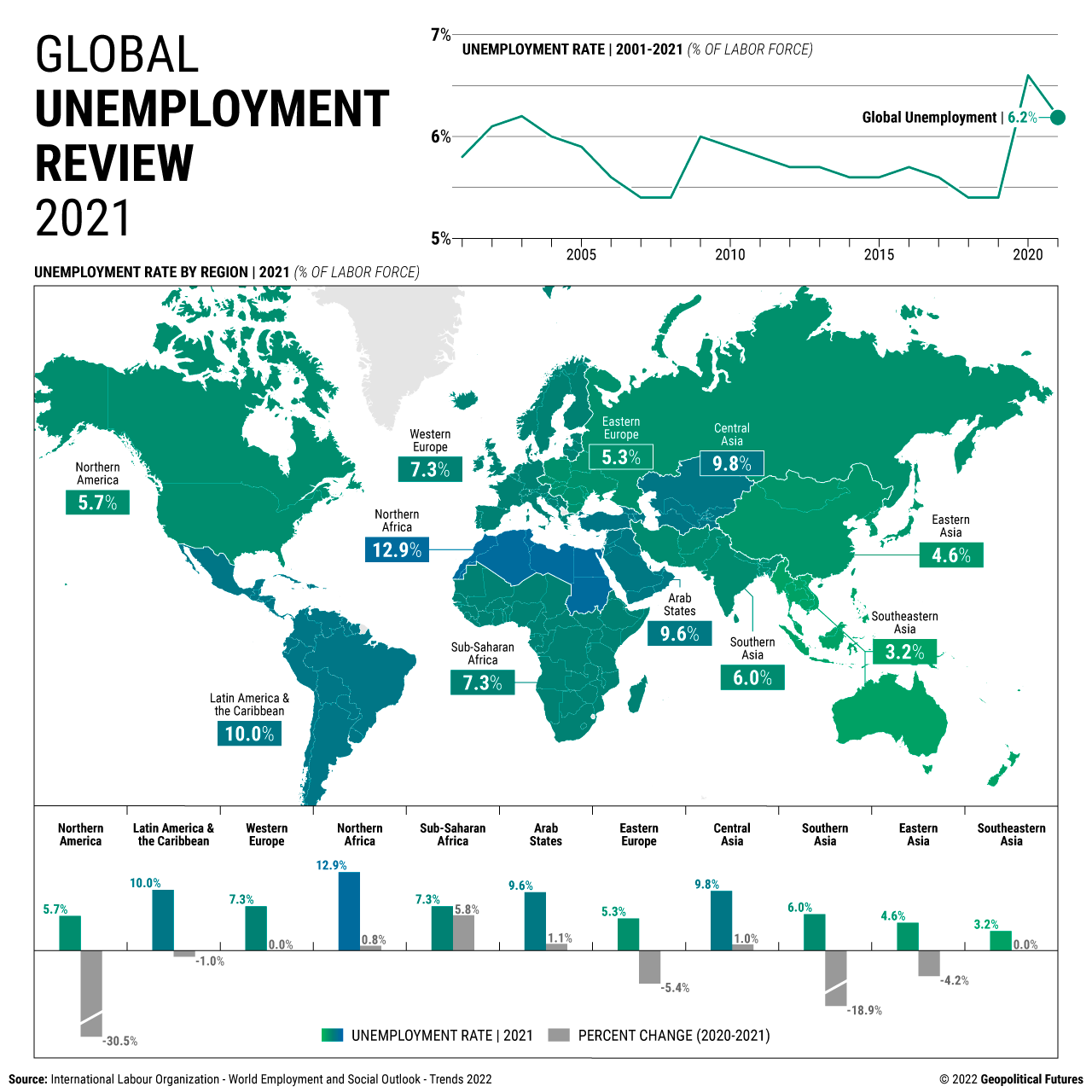The COVID-19 pandemic could cause structural shifts and long-term damage to labor forces across the globe, the International Labor Organization has warned. An uneven labor force recovery is exacerbating wealth inequality, gender inequity and technological divides among countries, the ILO said. Other trends, such as the rise of temporary work contracts and informal employment, appear to be leaving a permanent mark on working conditions. The global labor market faces a deficit of 52 million full-time jobs, and unemployment affects 207 million people. The global unemployment rate of 6.2 percent is the second highest since 2003 and isn’t expected to return to pre-pandemic levels this year.
To date, high-income countries have recovered the fastest from the pandemic. They account for about half the recovered global employment over the last two years. However, they account for only 20 percent of the global labor force. Their low- and middle-income counterparts, meanwhile, have struggled to bring back jobs. Adding to their problems is the fact that many households long ago depleted their savings, and their governments are in a weaker position to provide social protection. In these poorer countries, temporary employment, informal jobs and self-employment have driven the labor market recovery.




 Special Collection – The Middle East
Special Collection – The Middle East